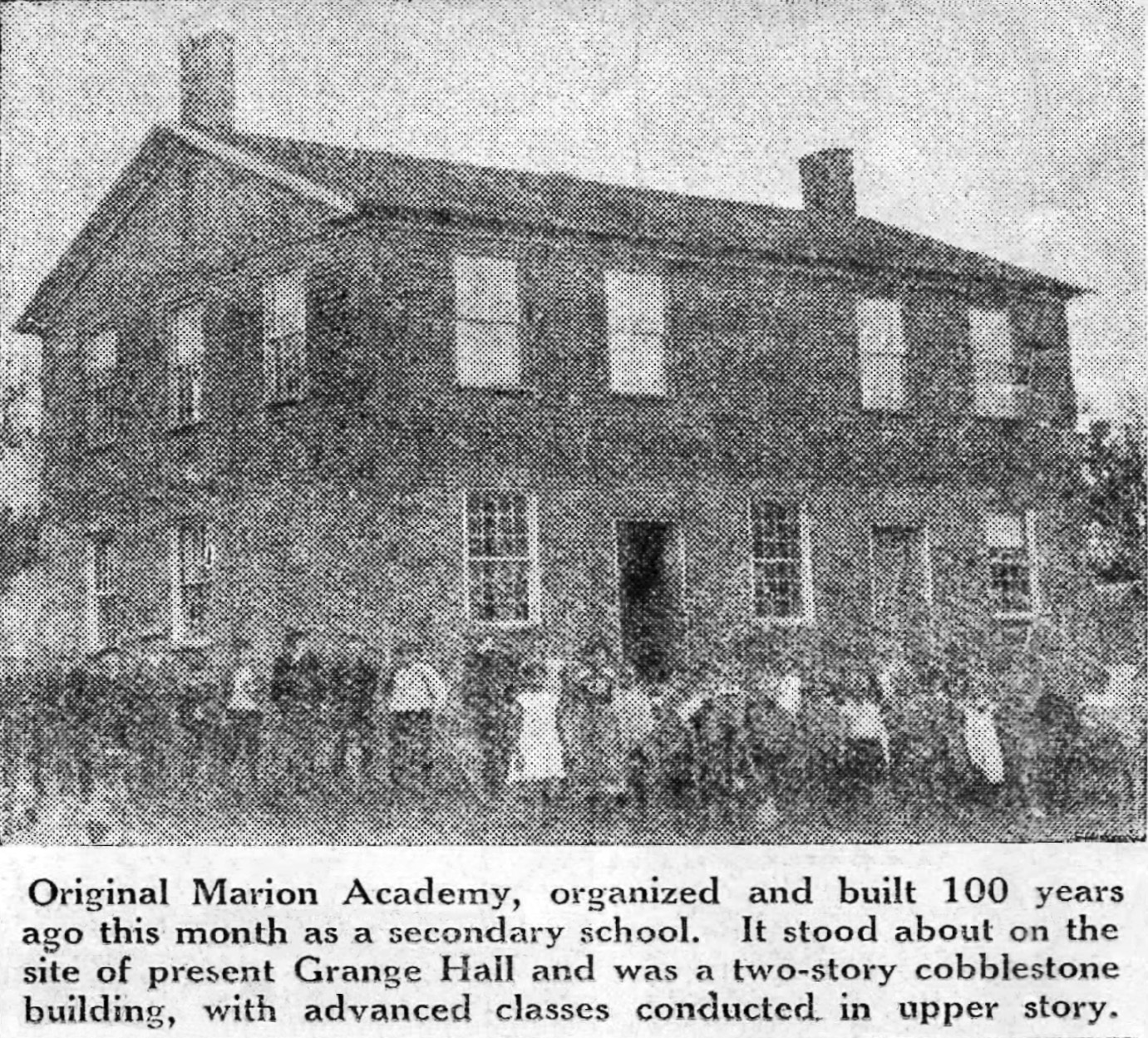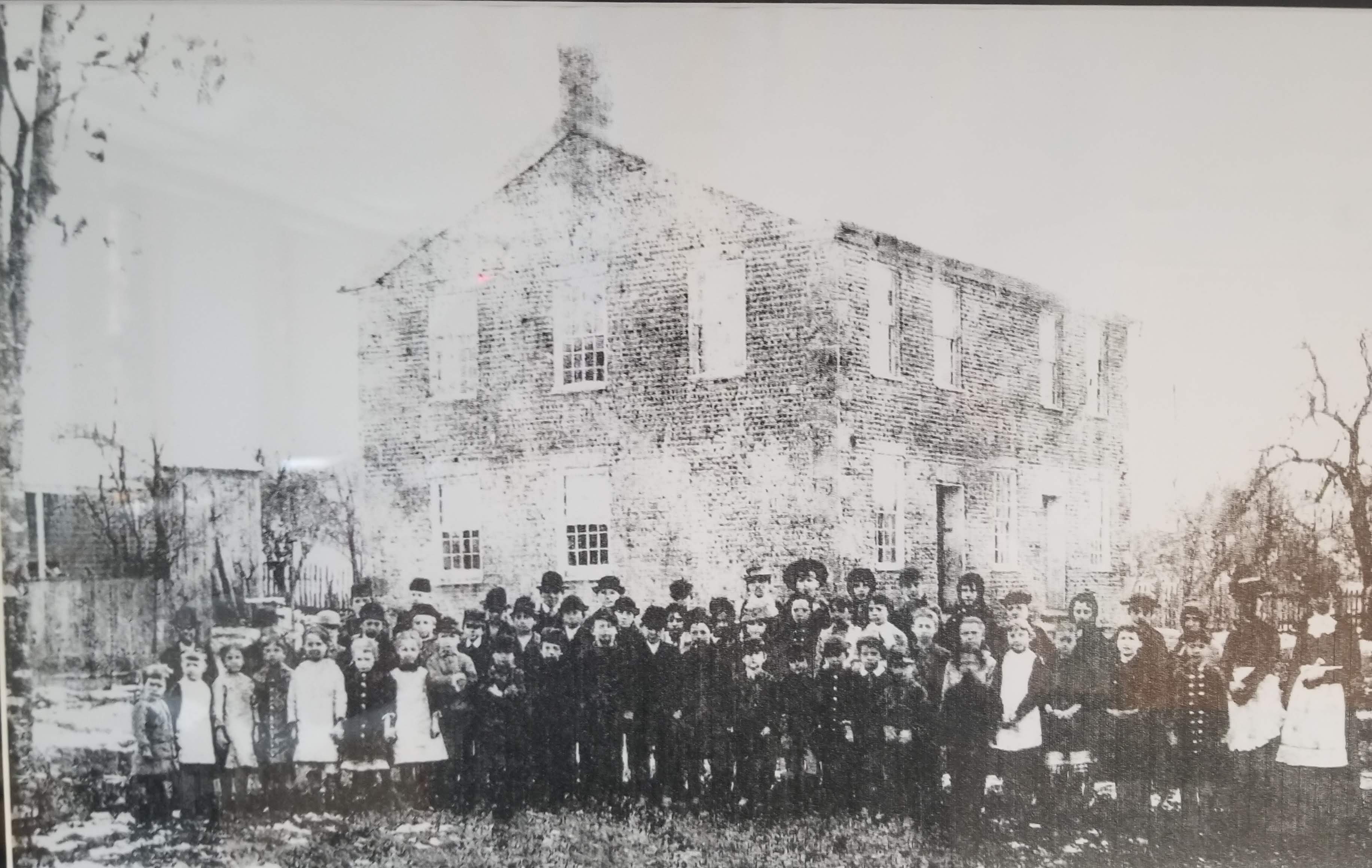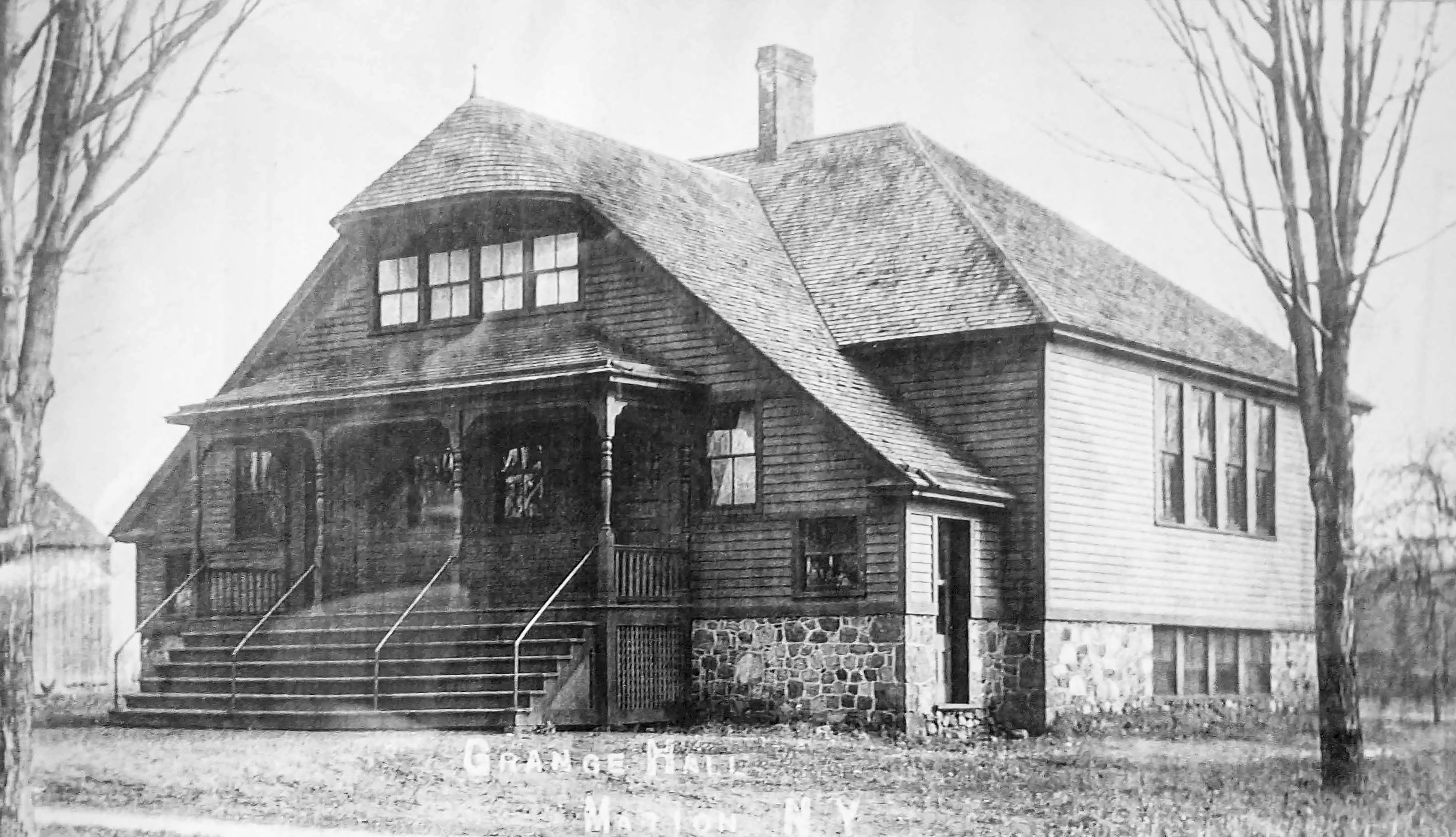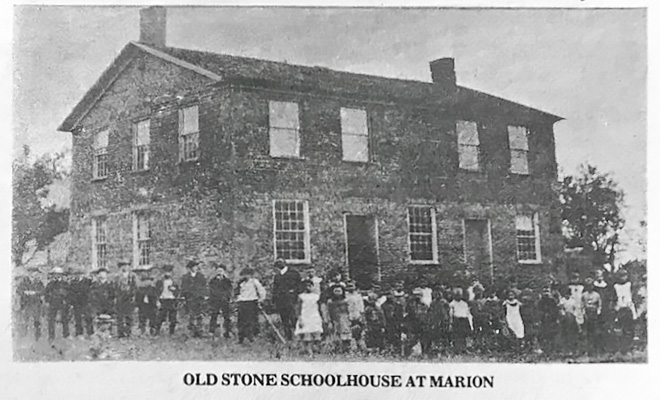Building date: 1839, razed ~1893.
Original use: Schoolhouse, Marion Academy 1839 and District #1 1851.
Corner structures:
Mortar application and content:
Types and uses of stones:
Types and choice of windows:
Structures with similar masonry details:
Masons who worked on building:
Unique features:
Map views courtesy Google Maps. Address is Google Earth confirmed; 43°08'32.86"N 77°11'17.26"W.
Town of Marion and Wayne County 1978 Highway Maps
"Recollections Of Old Stone Schoolhouse Shared by Wood"
By Clarence T. Wood Courier-Journal, Palmyra, N.Y. - Friday, June 8, 1979, page 8.
MARION - My early recollection of the Old Stone Schoolhouse began in the spring of 1889 when our family moved from the country in to the Frank Longely house that stood on the west side of the Marion-Williamson highway, opposite the home of D. Henry Crane, bought by my father in the early spring of 1889.
From a paper written by Mrs. Vera Curtis, and published in the Marion Enterprise of August 27, 1926, I quote the following: "March 27, 1839. The Marion Academy was incorporated and the same year a cobblestone building was erected on the site of the present Grange Hall."
From another paper written and published in the Lyons Republican by the late Mrs. Lucy H. Mason, I quote the following:
The marked interest in Marion High School is but the continued expression of the people of Marion along educational lines for seventy-five years. In March 27, 1839, an academic school was chartered following a select school in which Morrison Huggins gave instruction in the higher branches. Ornon Archer was the first principal of the old Academy. The building was a stone one, afterwards used as a district school, which was replaced in the 90's by a new building that was later purchased for the Grange Hall."school in which Morrison Huggins gave instruction in the higher branches. Ornon Archer was the first principal of the old Academy. The building was a stone one, afterwards used as a district school, which was replaced in the 90's by a new building that was later purchased as the Grange Hall."
Once again from a paper prepared by Miss Mira Crane, I wish to quote a few lines. This paper was published in the Marion Enterprise of Aug. 26, 1926.
"March 27, 1839 a charter was obtained for the Marion Academy for which a cobblestone building was erected on the east side of the present Grange property." "This Academy continued until 1851, and the same old Stone Schoolhouse used by District No. 1 echoed for years the droning of the reading lessons."
This definitely establishes the date of its first use as a district school, and it continued to be used until about the spring of 1891 or 1892, when it was torn down and the present building now used as the Grange Hall was erected and used for some years as a school. I remember one teacher in that school, a Mrs. Lang.
The old stone school building was built of lake cobblestones set in rows into cement, with door and windows made of quarried rock. The building was divided into rooms, a small one in the south side for the smaller children, and larger room for the advanced grades.
A door on the west side of the building led into an entrance where coats and hats were left. Along the west wall was the entrance to the primary department, and on your left hand as you passed along this entrance was a stairway, that led to rooms above wherein were held at stated times little plays by the pupils and on occasion "last day exercises". It consisted of one larger room and two smaller rooms for the actors, who put on the performance.
Entering the large school room for advanced pupils on your right hand was a platform with the teachers desk and chair with blackboards back and right of platform, at the end of right hand blackboard was a door leading into the smaller room that housed the younger pupils.
Two lines of desks lined the south side of the room, then two shorter lines of desks, together with a squat pot-belled stove, taking up the center of the room, and said stove in the winter furnishing the only heat we had and at times this was not much on the long cold days.
Beyond the stove on the north side of the room were two more long lines of desks - the Maple Ave. side. Back of the lines of seats and facing the east side of the building, was a window for each line of desks, but on the Maple Ave. side I can remember but three windows.
To the left of the teacher's desk on the west side of the room was a short line of three or four seats from the north to the south of the room, which were usually occupied by "honor pupils," like A. Clair Potter, Anna Gillette, William Eley, Scott B. Curtis, Ernest Snyder, and others.
The building was at one time considered quite an example of the stone mason's art, and was built in a most solid manner. The inside was sealed with matched pine, painted, I believe, a light green.
My seat was usually either in the middle of the first or second row on the south side of the room. From there I could see out on Maple Ave. about the level of the upper story of the houses opposite.
In a recent conversation with my brother, Henry B. Wood of Newark, he, as well as myself, can only remember one teacher during our entire stay in the old stone building, and that was a Mr. Walter Fraser. He was of Scot decent and if ever there was a more earnest and just man, and teacher, I never found him.
I wish here to pay tribute and honor to the memory of Mr. Fraser. While he was in the school room, he was wholeheartedly a teacher, but at recess time, outside the school room, he was just one of the ball team, or whatever game was in progress. He was no stranger to both my brothers nor myself, as he had been a teacher in the old Ball School District which we had come from up in the country.
My brother, being younger than I, entered the primary department of the stone school and he remembers the following teachers in that part: Miss Georgia Burrud, Mary Young, Addie Martin, and last but not least, Mabel Hartson. A baseball diamond was on the west side of the school lot with the home plate just about where the entrance to the Grange Hall now is.
I can still remember a game one day in early spring, when being on third base, I attempted to steal home. Just as I stepped on the home plate, Walter
Fraser, who was playing first base, lined the ball to the catcher. He did not get the ball, but I did, right over my left ear. It dropped me in my tracks, and the next thing I remember is some time after, lying on the ground being fanned by Pearl Hathalay, now Mrs. Albert Freeman.
The older boys had a fine trick that was played on all newcomers. Clair Potter and Scott Curtis tried it out on me. Clair called me off to one side and kept talking to me to divert my attention, while Scott got down on his hands and knees back of me. At the proper time Clair gave me a shove over Soctt's back. Well I paid no attention to Clair, but pitched into Scott and pounded him so hard he cried, "enough," but strange to say, from that day on Scott and I were the best of friends.
On the east side of the school property was the home of Cy Furgeson, and elderly man, who had a hobby for fine gardens. Well, at one time, the ball diamond home plate faced the fine garden, and most of the balls missed, went over the fence into his fine garden. Naturally, the boys going after them did considerable damage to the crops, and many and long heated arguments took place on the subject. Also Mr. Furgeson had a habit of confiscating the balls which fell on his property, and it is said that at an auction after his death, a bushel crate was found in his barn more than half full of baseballs.
Looking back from the present time, I do not know but what he was more than half justified in doing what he did, but at the same time, it was anything but a laughing matter to us younger generation. Across the street were the homes of several staid citizens who also objected to the ball playing, so in those days, school was not all fun.
Provided by Karen Crandall.
Mar-29 Marion Academy history sheet. From the personal research of cobblestone historian Karen Crandall.
 Marion Academy.jpg ¹ Newspaper clipping dated 1939. |  Marion Public Library-cobblestone academy.jpg ² |  Marion Public Library-replaced SH.jpg ² Last building built on Marion Academy site. Currently is the Marion Public Library. See Google Maps street level view above for current appearance. |
¹ Image provided by Karen Crandall.
² Image courtesy Tracy Whitney, Library Manager, Marion Public Library

